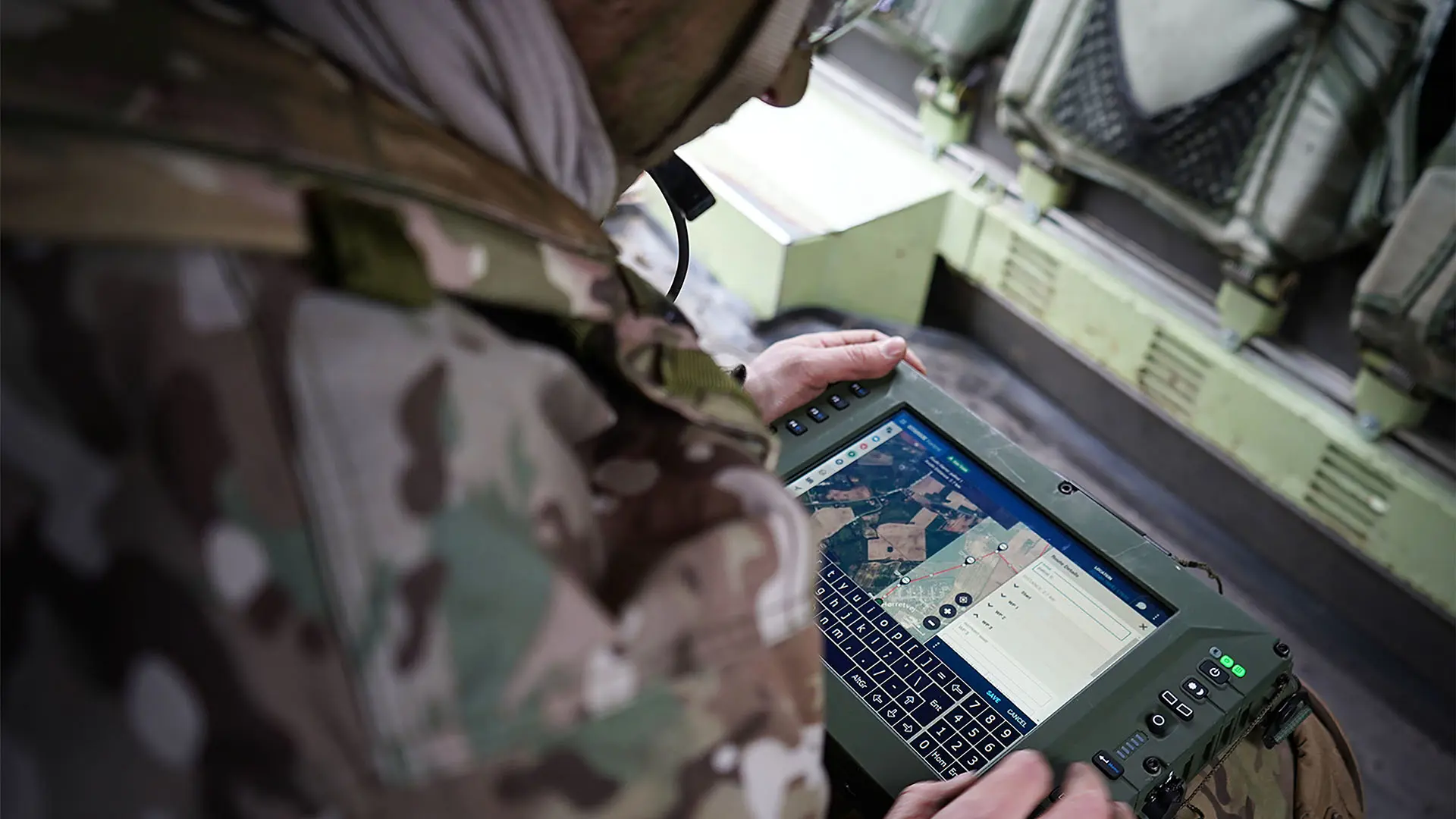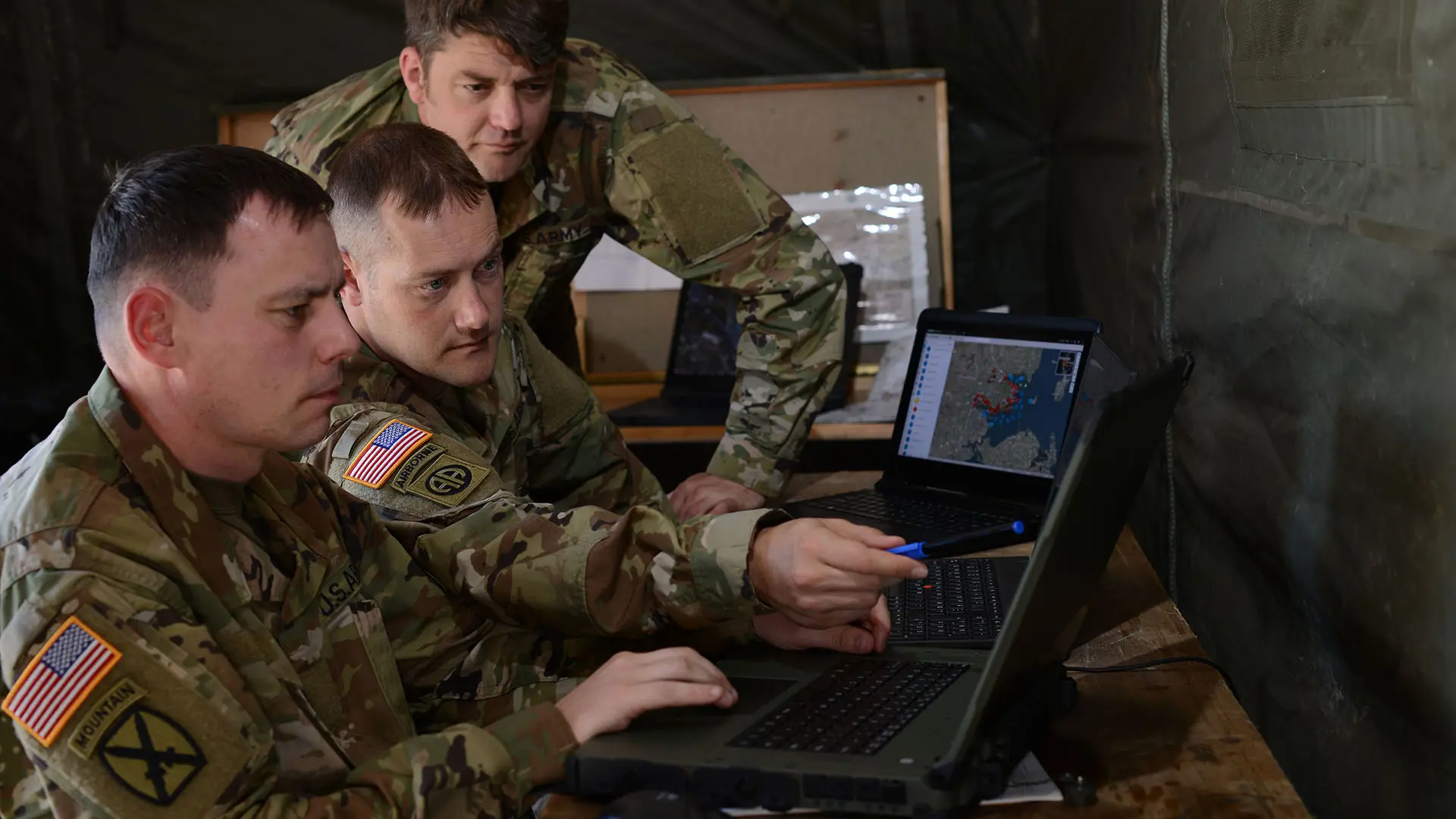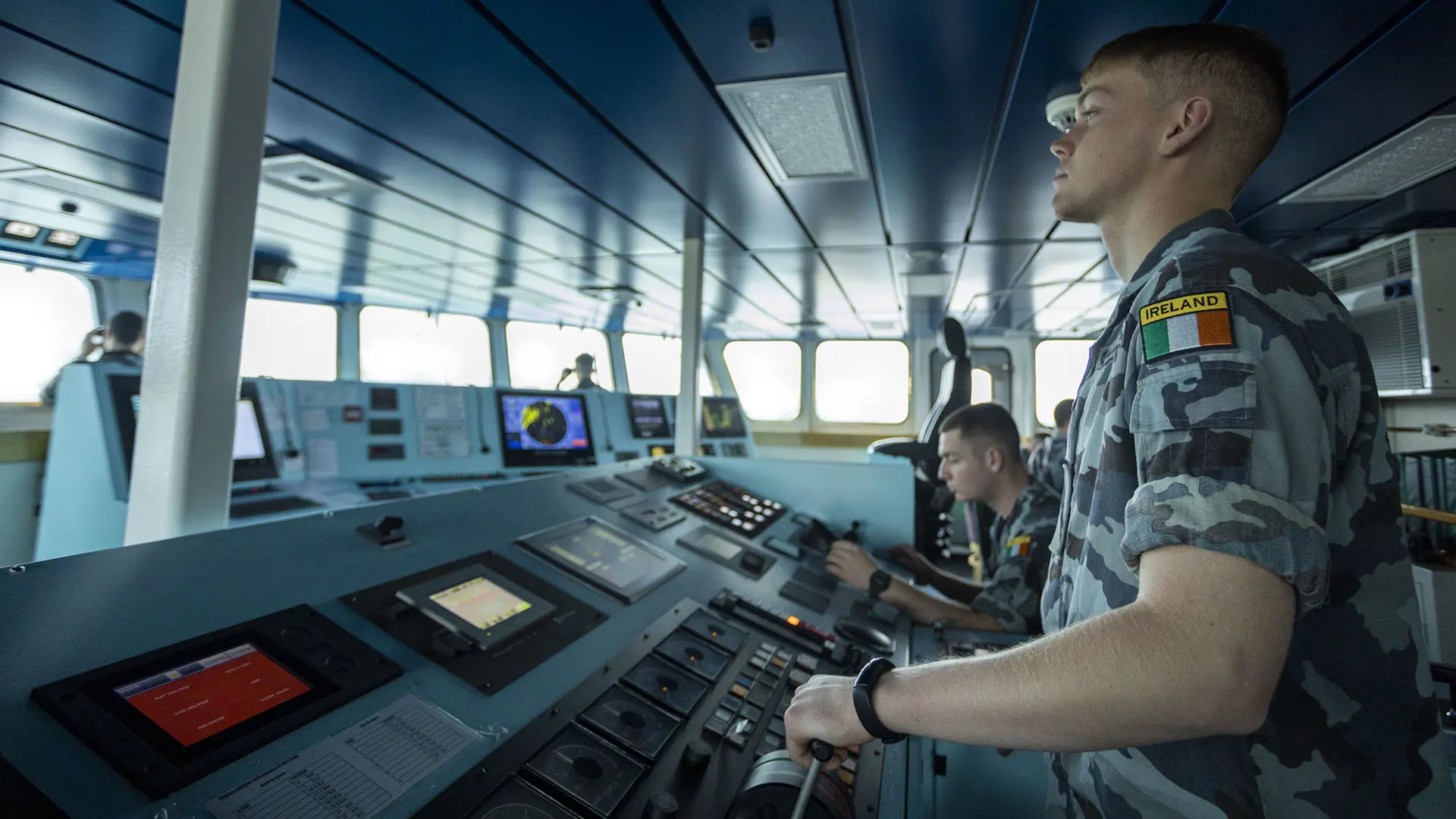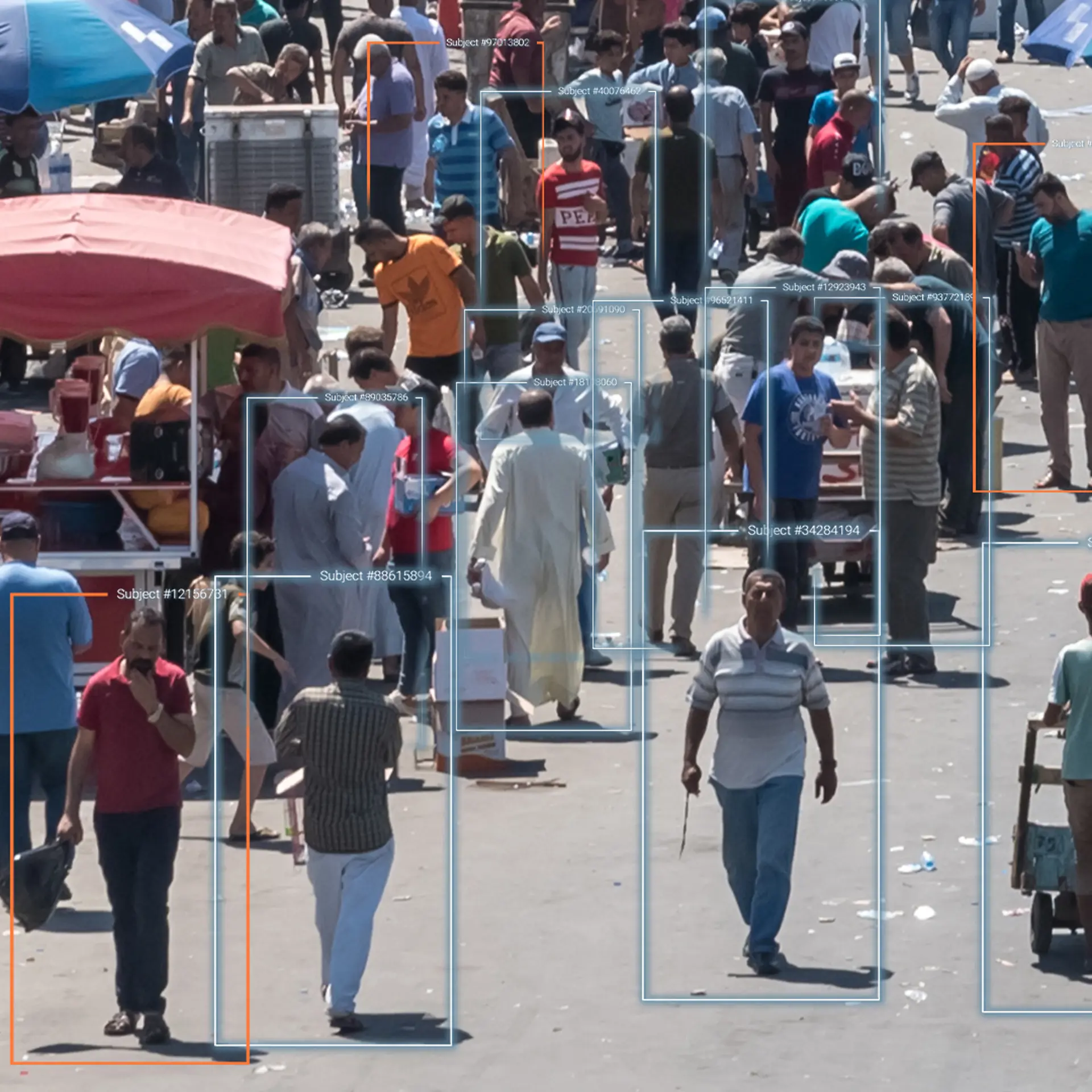
Creating advanced capabilities through artificial intelligence
AI is a transformative technology on the modern battlefield and is bringing a step change in capabilities to all domains. Its ability to handle vast volumes of complex data will streamline and speed up decision-making processes, acting as a force multiplier for commanders.
We are exploring the application of AI across the SitaWare suite. We have already introduced various aspects in our software, ranging from our AI Assisted Toolbox designed to improve work processes, to the use of machine learning for anomaly detection in the maritime domain.
We are now working on a range of advanced applications for AI that we believe will deliver an operational advantage. They include decision-support tools – such as for route planning and analysis – and the ability to analyse multi-source intelligence reports through the application of natural language understanding.
Video: Developing AI features for SitaWare
Modern defence operations are no longer about having more data but about understanding the correct data at the right time.
At Systematic Defence, we are developing AI that helps commanders cut through complexity and act with clarity. Not just one AI, but many AIs, each integrated to solve different operational challenges across the battlespace. Read more about SitaWare Insight here.
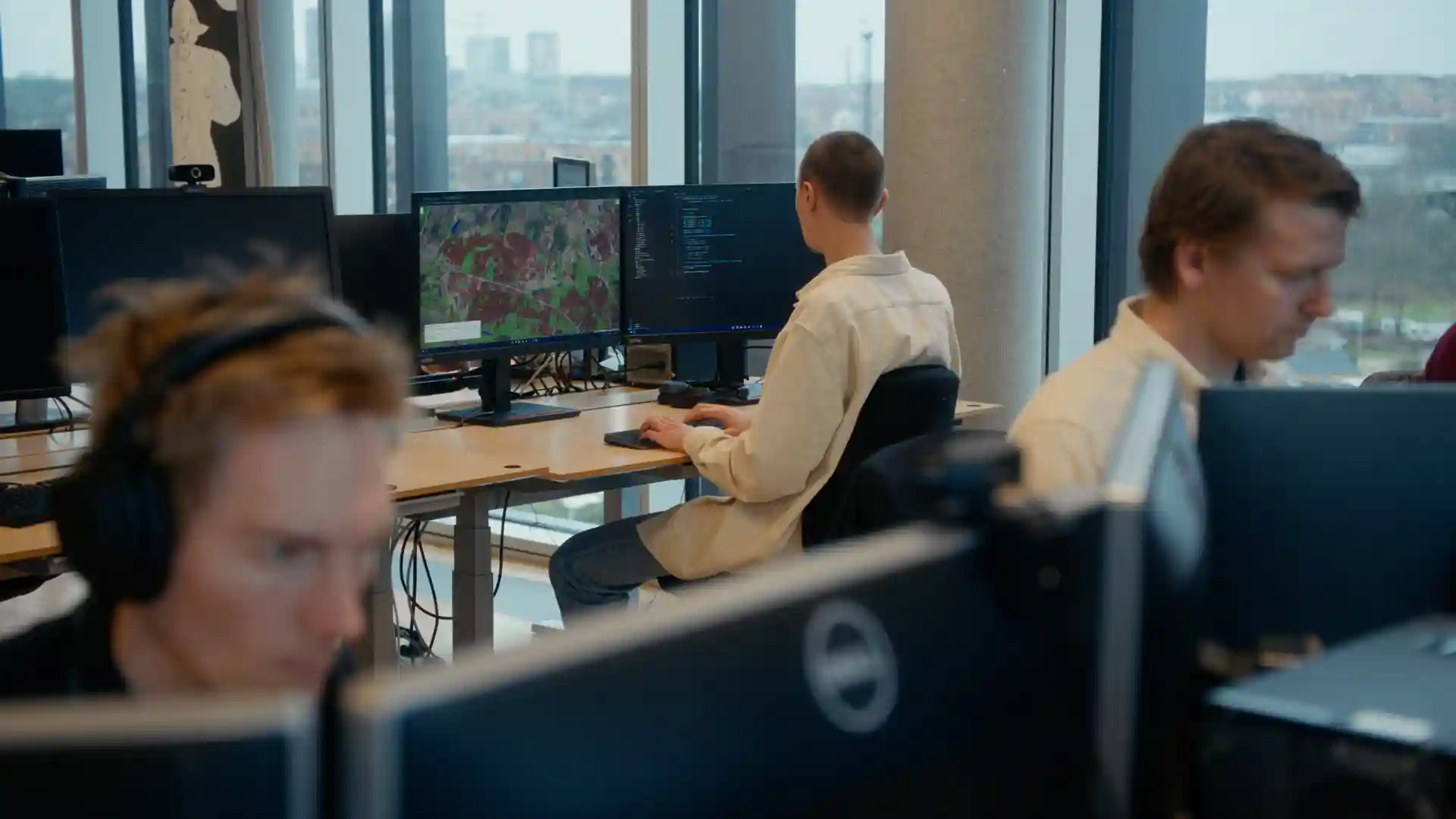
How we work with AI
Implementing AI in the maritime domain
The Recognised Maritime Picture (RMP) is a cornerstone of naval operations, and the provision of a comprehensive, accurate, and current RMP is a key element in mission success.
With time often a limiting factor and increasing pressures on manning, the ability to automate processes and use AI in the development of the RMP and other tasks can be decisive, especially with regards to track correlation and anomaly detection.
The sheer number of tracks to be considered not only makes the correlation process a laborious one, but also open to human error - the application of correlation and fusion engines in SitaWare Maritime is going some way to addressing this and lifting the burden placed on the RMP manager.
Injecting historical information – such as that on ship locations, vessel characteristics, and typical movements – into the AI system enables an accurate ‘pattern of life’ to be established. Based on this, commanders can task the system to alert them to a range of abnormal and other behaviours.
Given accurate historical data to establish the pattern of life and authenticated, up-to-date information – including track data – there are a myriad of anomaly detection and other tasks that can be automated.
AI can bring a range of other capabilities to naval commanders, not least the ability to automatically identify ship classes and even individual vessels based on object recognition. Algorithms trained on the appropriate data can automatically determine vessels based on the analysis of an image or silhouette, this capability can meet dynamic recognition tasks and provide persistent surveillance, for example from shore-based sensors.
The speed at which modern naval warfare against a peer or near-threat will be conducted demands that AI technologies are introduced, and they have the potential to enable a commander to get inside an adversary’s ‘OODA loop’. Systematic is continuously exploring opportunities to leverage AI for naval operations, and further capabilities are in the roadmap for SitaWare Maritime.
AI assisted toolbox
SitaWare’s AI Assisted Toolbox is designed to ease the workload of operators, in the first instance with regards to the processes required to build command layers in the software’s map interface.
The AI algorithm automatically adapts based on the decisions that users make in choosing symbology for given scenarios or areas of operation, subsequently, it presents the user with the most common and likely to be required. For example, if a command layer in a particular area is typically composed of infantry units, then the associated symbology is prioritised over others. This serves to streamline and speed-up the process, as well as helping to limit errors.
The ‘knowledge’ developed by different SitaWare users can also be passed between them if command layers are shared. So, if a SitaWare user joins a mission or enters an area of operations that an another user is already active in, they can draw on the operational knowledge already established.
While the benefit of the AI Assisted Toolbox at higher command levels – where more detailed, labour-intensive planning is carried out – is clear, the algorithm can greatly aid users at the tactical level. Simplifying and speeding-up the interaction that a dismounted commander requires with their mobile device, for example, minimises the amount of time that they don’t have ‘heads up’ situational awareness of their surroundings.
Want to dive even deeper into the technology area?
We've selected three recent technology-focused news and blog articles and our dedicated AI eBook for the defence domain. For more knowledge on this topic, visit our News & Knowledge section.





